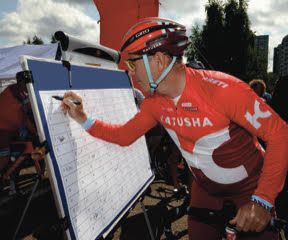
As a cyclist, you likely have a routine you like to stick to. However, you may notice after making great strides when you first started, your progress has stalled despite your dedication. That means it's time to change your routine. A structured plan is essential to improve specific cycling aspects.
Many variables influence your progress as a cyclist. Focusing on specific aspects can elevate your skills and techniques and advance you to the next level. Here are a few tips from Igor Makarov to help you improve your speed, cycling power, fitness, and quickness.
Track Your Data
Everyone's body is different, so there is not a one-size-fits-all plan that will sharpen your cycling skills, Igor notes. Therefore, it is essential to focus on your personal data. What is your average speed, distance, time, heart rate, cadence, and calorie burn? You should consider your power, heart rate, intensity, and cadence to enhance your speed.
Your heart rate affects your pedaling intensity. It also serves as a baseline for measuring your output effort. For instance, understanding your maximum heart rate can help you determine how to improve your performance. Your power threshold or intensity level is essential for planning your cycling duration and output. Cadence helps you establish your rhythm and pace, allowing you to determine when to speed up or slow down to boost your cycling speed.
Cultivate Energy Efficiency
Speed in cycling depends on how you expend your energy, Igor Makarov says. Therefore, your cycling route, bike handling, power delivery, and equipment affect your momentum. Know when to increase your pedaling effort and when to conserve your energy as you cycle.
For instance, cycling in a traffic light area requires you to stop and start depending on the traffic lights, impeding your ability to build speed. As you approach a traffic light, slow down instead of hammering to the light and then having to stop. Avoid unnecessary braking. You lose energy and momentum every time you break abruptly.
While your safety should be a priority, ensure you stay the course when there are no traffic concerns. You can easily lay off the brakes if you know how to corner with confidence.
Pedaling on long descents causes you to consume unnecessary energy. Instead, rely on gravity to improve your speed when going down a slope. The momentum gained will ease your ride up the next hill, helping you to preserve your energy.
Cruise Control
You can improve speed by working on your cadence. One way to improve your speed is by slowly progressing through your ride. Increase your intensity after every 5 to 15 minutes, depending on your ride length and maintaining the power threshold.
Igor notes that you can also opt for a fast full sprint after a warm-up for 30 seconds to a minute and then cool down. The intense and easy pedaling periods improve your breathing and heart rate. Repeat this cycle multiple times during the ride.
Cycle on Off-Roads
Consider riding through the beaten path instead of on well-paved ones, Igor suggests. Cycling on dirt and sand surfaces can improve your performance as well. Such roads require more power and effort, building your endurance and strength. The uneven terrain also challenges balance and coordination, essential for building speed. Include dirt roads, a few hills, and safe traffic areas to work on different aspects that contribute to your speed and abilities.
© 2025 NatureWorldNews.com All rights reserved. Do not reproduce without permission.





